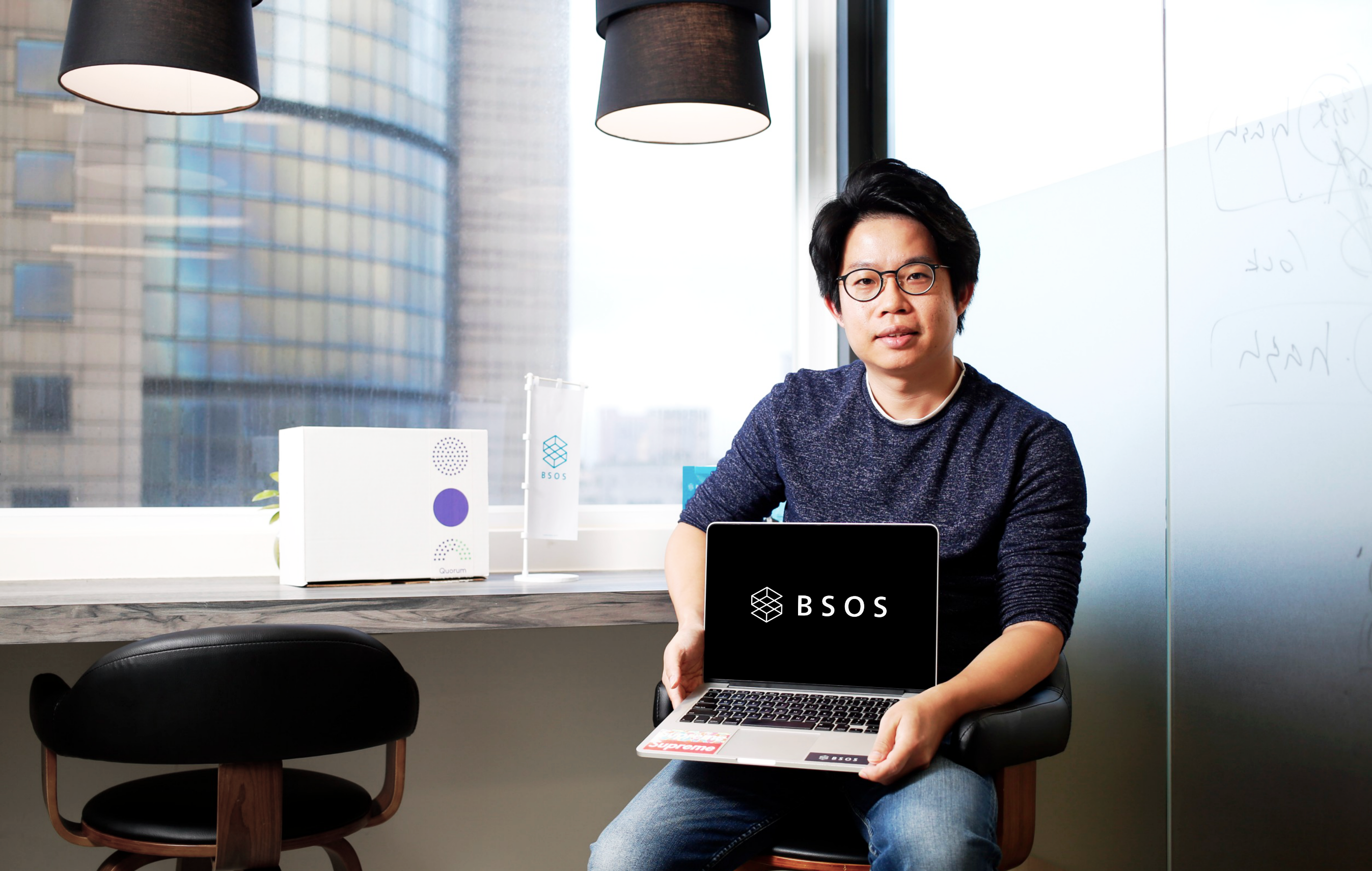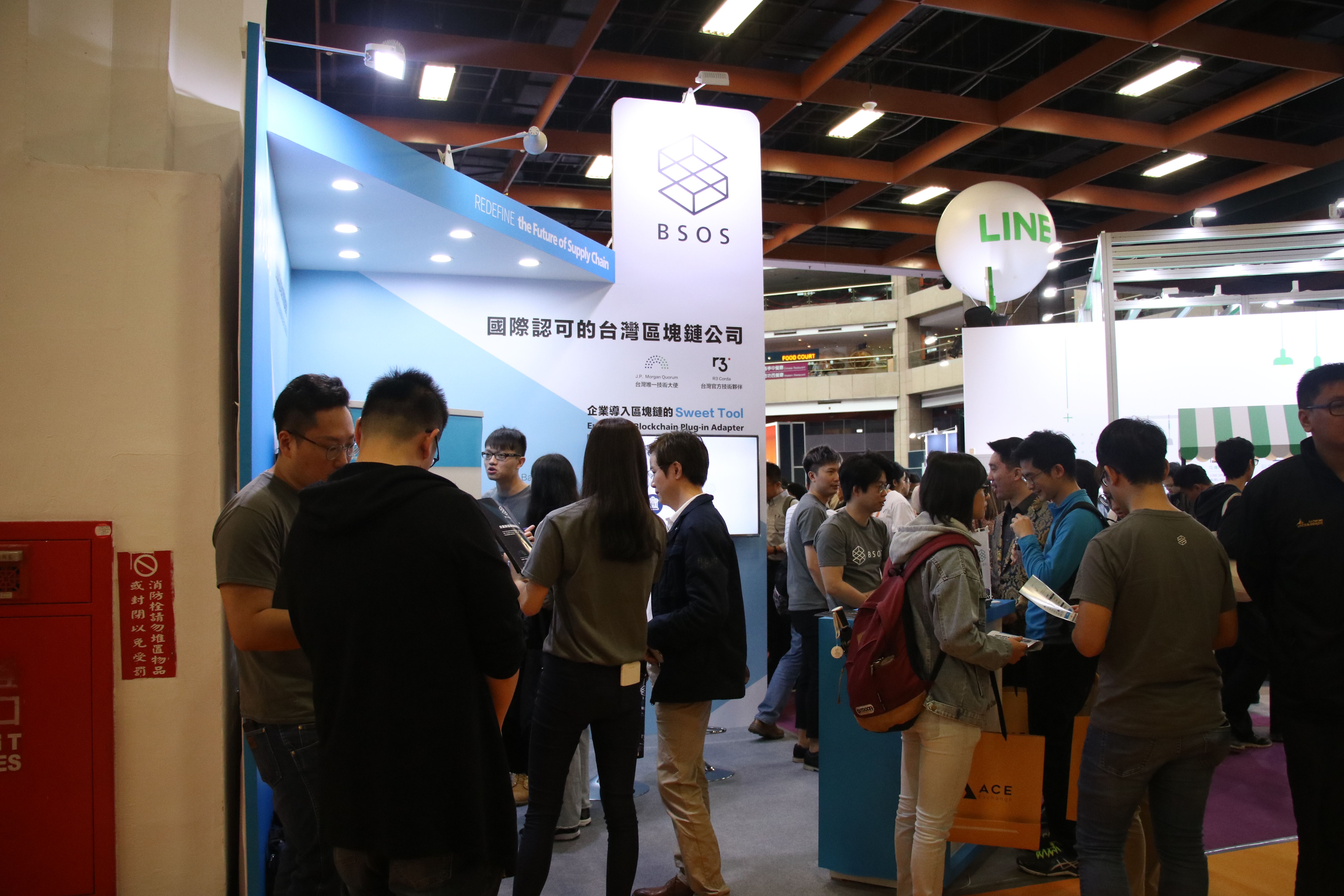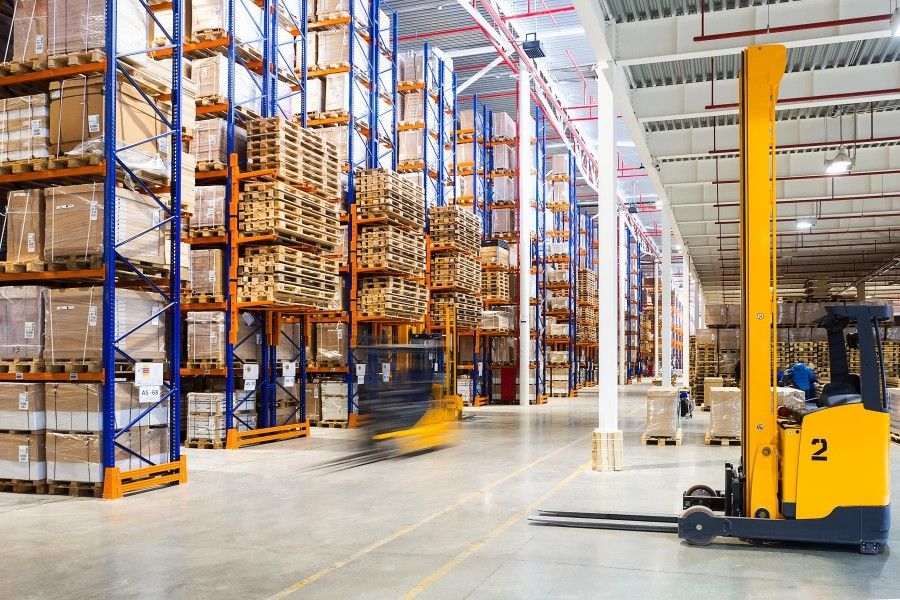The blockchain startup BSOS, which has just been established for a year, is already the partner of many large domestic financial holdings. How does blockchain technology disrupt the financial industry?

Three challegner banks participated in the same stage for the first time. This year's FinTech Taipei was particularly lively, and various banks presented innovative products to compete. However, just between the LINE BANK and CTBC Bank exhibition areas, a venture appeared in the financial institution rather than the startups area, which is particularly eye-catching.

"It took a lot of money to get to this good position this time." Daniel Huang, CEO of blockchain startup BSOS, said with a smile. BSOS, which has just been established for one year, is already a partner of many large domestic financial holdings, and many large-scale projects that cannot be made public are in progress. When the cryptocurrency boom returns to calm, how can blockchain technology disrupt the financial industry?
Traditional financial supply chain has “trust'' issues
Asked Daniel why start a business? Daniel Huang, who had worked at ASUS for 6 to 7 years, said lightly that he had never thought about this in the past. Like most people, he only wanted to do his job well and live a stable life. He didn't have much imagination about the future. .
Five years ago, he joined Cheetah Mobile as the head of App product. He was infected by the environment and chose to step into the world of blockchain. But Daniel Huang is not a blockchain believer. "I used to be a product maker, not a person in the cryptocurrency field." BSOS focuses on applications, cutting into the blockchain field from the perspective of product services.

After reading Tencent's blockchain white paper and communicating with people in the industry, BSOS believes that "blockchain in supply chain finance" is relatively promising in both the industry and the development of blockchain technology.
So what problem does BSOS want to solve?
The products we use every day around our lives are produced through the joint efforts of manufacturers and enterprises involved in the supply chain. There is usually a core company in the supply chain with upstream and downstream manufacturers. Among them, suppliers and distributors are often small and medium-sized enterprises. It is possible that large companies need to borrow money from banks and seek capital injections because of the long payment period of funds. The so-called Supply Chain Finance.
Traditional supply chain finance faces problems such as poor information transparency, difficulty in verifying the authenticity of documents, and difficulty in tracing transactions. Financial institutions cannot quickly and effectively verify the authenticity of financing data. Loan fraud cases emerge endlessly, and they rely heavily on manual review, which also makes it impossible to reduce business costs. This is a major pain point of supply chain finance.
For example, many small and medium-sized enterprises use invoice financing, and banks use the unpaid settlement on the company's account as collateral to issue loans. However, the participants in the supply chain often use books of different specifications, and the information is not transparent. Better, it may cause the above-mentioned problems.
However, the three parties in the supply chain all hope that loans can be successful. Banks want to make money; suppliers want to borrow money, and core companies want to maintain the past account period, but they are afraid of being bankrupted and receiving fake data. There is great distrust between each other.
Blockchain effectively reduces risk control costs, and large financial controllers actively introduce
Daniel Huang believes that there is a huge trust crisis behind traditional supply chain finance, and blockchain is very suitable to solve this problem. BSOS has developed the BridgeX technology, which can quickly establish a supply chain blockchain data collaboration platform, using the tamper-proof characteristics of the blockchain, and encrypting the asset data of each participant in the supply chain before uploading it to the chain.

However, the blockchain can only ensure that the data is not tampered with, and cannot ensure the correctness of the data. Therefore, BridgeX has a "multi-party endorsement" system, that is, all parties in the supply chain, such as core companies, accountants, and logistics. Businesses can verify each data node to form a series of authentic, traceable, and tamper-proof asset history records.
In the future, when suppliers apply for financing, the blockchain platform can provide financial institutions with a complete and credible financial asset history, reduce risk control costs, and risks of evil, and greatly improve the operational efficiency of supply chain finance. "For banks, this is already the difference from the known use of fire to the industrial age," Daniel Huang said.
BridgeX developed by BSOS can quickly execute business processes on the chain and maintain the sustainable maintenance of the system through automated smart contracts. Even if your IT personnel is not familiar with blockchain technology, you can still easily connect to your own system by docking API with a click.
Merely one year after its establishment, the BridgeX system has been adopted by large financial controllers at home and abroad, and even challenger banks have expressed interest.
Open bank trust problem, blockchain is also one of the solutions
Not only supply chain finance, BridgeX can be applied in a variety of scenarios, such as Open Banking, which has been highly discussed recently. The concept is that banks connect services with third-party players through APIs. However, third-party companies integrate multiple bank information and new data generated after interacting with users. There are problems with data ownership and storage. How various financial institutions jointly maintain these data is actually a trust issue behind it.
BridgeX can assist financial institutions and third-party operators to encrypt original data on the chain, and cooperate with the multi-layer and multi-signature authority control mechanism to ensure the authenticity of data writing. Participants in the open banking ecosystem can share with confidence on the platform. The advantage of data is that there is no need to rely on a single intermediary institution, and the system will not collapse due to problems with a single institution. It is a potential solution under the development of open banking.
In cooperation with the financial industry, BSOS overcomes two major difficulties
Blockchain supply chain finance is still a very new concept. Daniel Huang observes that it will take 2 to 3 years for the industry to mature and apply. Although many domestic banks are still immature in developing blockchain applications, the traditional financial industry's attitude towards new technologies is changing. This is why many large domestic financial controllers have turned to BSOS to build platforms.
It has a major relationship with people's property. Prudence and conservativeness have always been the industrial characteristics of the financial industry. For blockchain startups that are at the forefront of technology, cooperating with the financial industry is like dancing with an elephant.
Daniel Huang believes that at the beginning, the financial holdings’ knowledge of the blockchain must be pulled to the extent that both parties can communicate, but this is not the most difficult. “The DNA of the financial industry is very cautious.” One time the BSOS team just talked to customers. Show the product flow chart and tell startups that the focus is to discuss product functions, but the focus of financial practitioners will be on the analog numbers on the flow chart. "Numbers are not true, but they can’t be edited. Then I told them that analog numbers can be edited. "This allowed the two parties to slowly find a tacit understanding of cooperation.
Another challenge is that the bank’s internal processes are rigorous. No employee can decide one thing alone. Project progress is often delayed for a long time, and the pace of work between the two parties is very different. "For startups, every day we dragged on, we were one step away from death, and then we slowly accepted that the pace was a little bit slower." Daniel Huang said with a shy smile.
Source: https://www.bnext.com.tw/article/55723/bsos-bridgex-use-blockchain-slove-supply-chain-finance